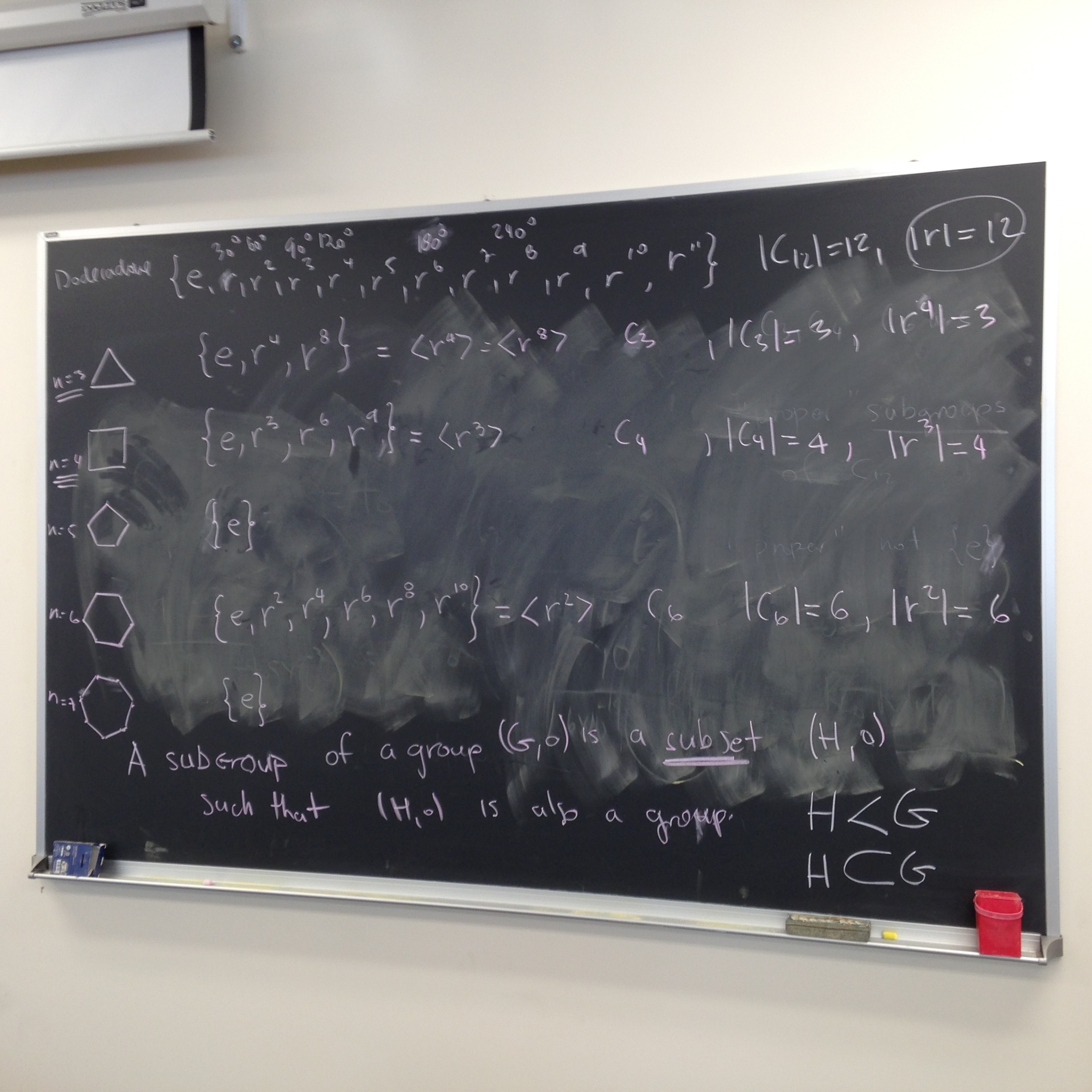Discovering Group Theory, Day 9
On Day 9, we learned about subgroups. We motivated the concept of a subgroup using rotational symmetries of regular polygons.
Students began the exploration by finding the symmetry group of a cutout of a dodecagon:
- identifying the elements of the group,
- finding the order of the group and the order of each element, and
- writing the Cayley table for the group.
Finding the order of each element proved to be a bit involved because one of the elements is of order 12 (and we have been working with low orders, up to 6 at most). So students explained to each other their methods for quickly finding the order of an element by looking at multiples of 12 and using the fact that an element and its inverse have the same order.
Once we figured out that we are dealing with the cyclic group C12, students were asked to overlay cutouts of various other regular polygons on top of the dodecagon and identify which elements of C12 leave the overlaid polygon also unchanged.

We organized our observations and discovered that those include C3, C4, and C6, which led to a formal definition of a subgroup and the distinction between a proper subgroup and the trivial group, consisting of the identity element. We also found the generators of these cyclic subgroups and noted that the element of order n generates the subgroup Cn.

The observation of the orders of the subgroups led us to the Lagrange’s theorem for finite groups (though we still haven’t formally introduced the distinction between finite and infinite groups).
On Day 10, we will dig deeper into subgroups and clean up our notation.